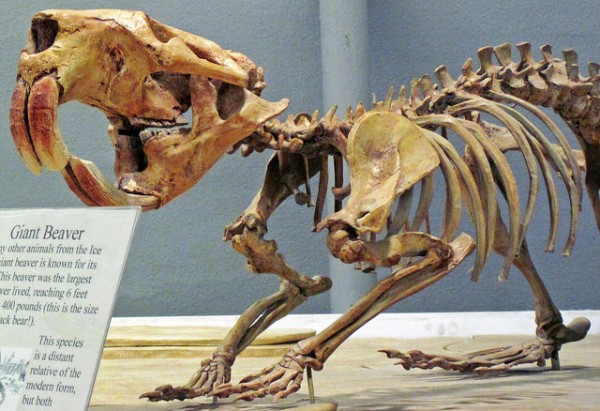By Kevin Jalain, | February 23, 2017

The fossil shows that the extinct creatures weighed as much as one ton when fully grown. (James St. John/CC BY 2.0)
Scientists have found a near-complete skull and a jaw from a pair of giant rodents belonging to a group that lived millions of years ago in South America.
The fossils show that the extinct creatures weighed as much as one ton when fully grown.These are the best-preserved fossils to date of this extinct group, which was previously known only by skull fragments and individual teeth.
Like Us on Facebook
A number of oversize rodent species roamed South America during the Miocene epoch, which lasted from about 23 million years ago to 5.3 million years ago, and some were downright gigantic. The largest rodent ever described, the enormous josephoartigasia monesi, was roughly the size of a buffalo and had a bite force as powerful as a tiger's.
The 160-million-year-old fossils of the extinct rodent-like creature from China are helping to explain how multituberculates -- the most evolutionarily successful and long-lived mammalian lineage in the fossil record -- achieved their dominance. The fossils of the Rugosodon eurasiaticus were preserved in two shale slabs. It is about 17 cm (6.5 inches) long from head to rump, and is estimated to have weighed 80 grams (about 2.8 ounces), according to Science Daily.
Extinct Giant Rodents' Family Tree Rewritten by New Fossil Finds https://t.co/9i78xVKur4 pic.twitter.com/htzS2jeeqz
— Live Science (@LiveScience) February 22, 2017
According to Live Science, the new fossils belong to two rodents - an adult and a juvenile - and paint a more complete picture of the extinct and massive rat-like animals, the researchers said. For instance, the finds raise questions about how these giant rodents were classified within their genus, and hint that several species that were thought to be related may instead be a single species, the researchers wrote in the new study.
it appears that a giant rodent has eaten Mel B — keithlaw (@keithlaw) January 1, 2017
The researchers concluded that, from a very young age, the giant rodents were very similar to the adults, Andres Rinderknecht, a researcher in the Department of Paleontology at Uruguay's National Museum of Natural History, said. That conclusion led the research team to deduce that the vast majority of prior hypotheses were wrong, he said.
-
Use of Coronavirus Pandemic Drones Raises Privacy Concerns: Drones Spread Fear, Local Officials Say

-
Coronavirus Hampers The Delivery Of Lockheed Martin F-35 Stealth Fighters For 2020

-
Instagram Speeds Up Plans to Add Account Memorialization Feature Due to COVID-19 Deaths

-
NASA: Perseverance Plans to Bring 'Mars Rock' to Earth in 2031

-
600 Dead And 3,000 In The Hospital as Iranians Believed Drinking High-Concentrations of Alcohol Can Cure The Coronavirus

-
600 Dead And 3,000 In The Hospital as Iranians Believed Drinking High-Concentrations of Alcohol Can Cure The Coronavirus

-
COVID-19: Doctors, Nurses Use Virtual Reality to Learn New Skills in Treating Coronavirus Patients







